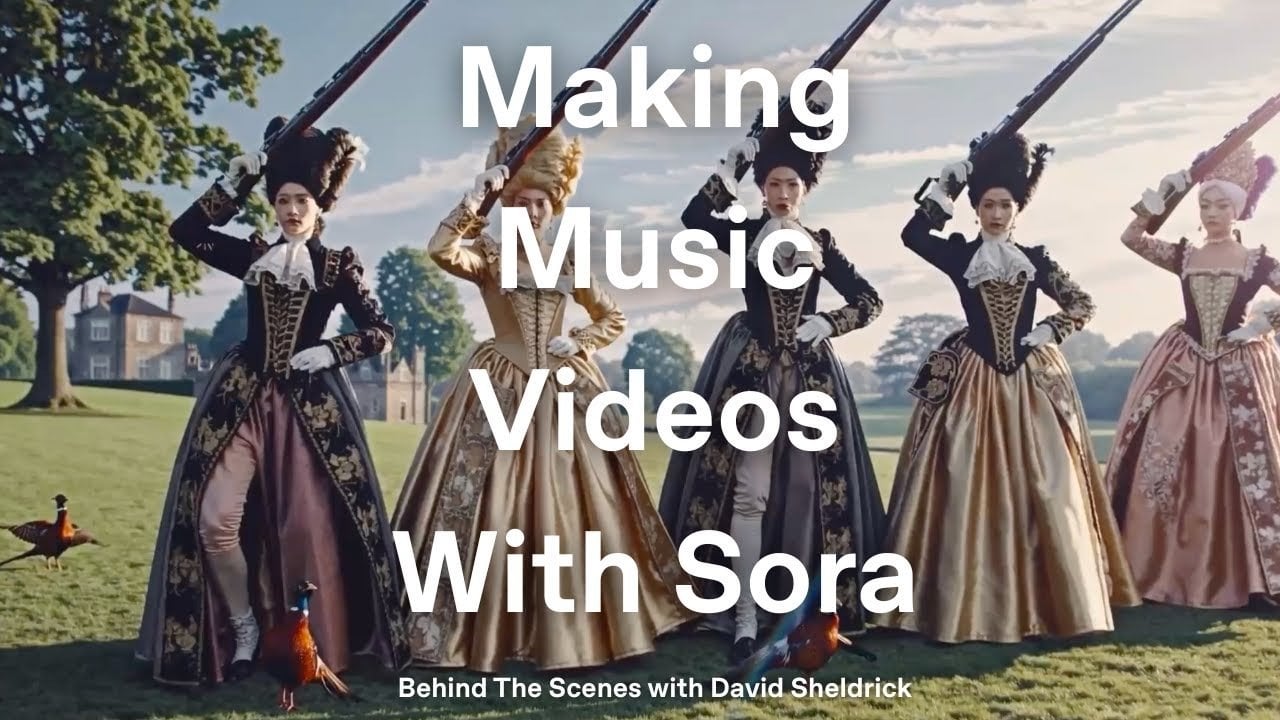Creating Captivating Music Videos Using Sora AI from OpenAI

Have you ever seen a music video that captivated you, making the viewing experience feel immersive? Creating such a captivating visual experience might appear daunting, but with the right tools and guidance, this artistic endeavor is attainable. One platform helping creators achieve this is Sora, which seamlessly combines innovative technology with creative flexibility to bring artistic visions to life. In this guide, David Sheldrick, an experienced video producer, shares an in-depth, step-by-step approach for making music videos that are not just enjoyable but also emotionally impactful. Whether you’re a novice or a seasoned filmmaker, you are about to explore the exciting process of blending music, visuals, and storytelling.
Creating Music Videos with Sora
Key Takeaways:
- Effective pre-production planning is crucial in defining the vision and tone for the music video. Make use of Sora’s exploration features for inspiration.
- Divide the concept into smaller segments to promote a consistent narrative throughout the video.
- Utilize Sora’s visual refinement features, such as presets and motion effects, to enhance visual quality and emotional impact.
- Choose music carefully and synchronize visuals with this audio to deepen emotional connections.
- Final editing focuses on pacing and thematic coherence, ensuring a polished final production.
This guide will help you understand how to create a music video that resonates emotionally with the audience. You’ll learn about the art of world-building, where each scene tells a story, and how to expertly sync your visuals with music. Utilizing Sora’s advanced features, including lighting effects and motion dynamics, can enhance the depth of your project. The core of this process is crafting an emotional link with viewers. By the end of this guide, you’ll possess the skills to create music videos that leave a lasting impression.
1: Pre-Production and Creative Planning
The success of any music video starts with effective pre-production. This phase is crucial for defining your project’s creative direction.
- Exploring Ideas: Utilize Sora’s explore page for inspiration, sample visuals, and techniques to refine your concept.
- World-Building: Establish the look and thematic style of your video, whether it’s a futuristic environment or a natural setting. These decisions influence the overall tone. For example, integrating timeless artistic styles, like Japanese Kintsugi, can enhance visual storytelling.
2: Breaking Down Your Vision
Once your concept is solidified, it’s time to break it into manageable parts, allowing for focused storytelling.
- Scene Organization: Plan distinct segments, such as detailed close-ups, wide shots, and tranquil outdoor scenes, ensuring each contributes to a cohesive narrative.
- Dynamic Movement: Incorporate movement into your scenes—like dance routines or subtle character interactions—to create energy and seamless transitions.
3: Rendering and Visual Refinement
This phase is where creative ideas come to life through careful rendering and visual adjustments.
- Using Presets: Experiment with Sora’s visual presets to apply styles that match your vision. Adjust settings as needed to get the preferred look.
- Lighting and Motion Effects: Make minor adjustments in lighting and add motion effects to highlight key moments. Subtle changes can greatly enhance the emotional tone of your video.
4: Music Selection and Synchronization
The chosen music is the heartbeat of your video, making selection and synchronization vital.
- Choosing the Right Track: Use platforms like Artlist.io to find music that resonates with your video’s mood and message.
- Synchronization with Visuals: Carefully align cuts and transitions with the music’s rhythm to create a seamless visual and audio experience.
5: Video Assembly and Editing
With visuals and music prepared, you now assemble and edit your footage.
- Initial Timeline Setup: Organize your clips into a rough timeline to start. This serves as the initial structure for your video.
- Refining Timing: Adjust scene timings to match the music’s rhythm, ensuring a captivating progression.
- Seamless Transitions: Ensure all cuts and transitions synchronize perfectly with the beats to enhance immersion.
6: Final Touches and Cohesion
The last stage focuses on polishing your video, aligning every detail with your artistic vision.
- Reviewing and Adjusting: Continuously review the video, tweaking transitions and visuals for consistency with your narrative.
- Strengthening Narrative Flow: Add any additional scenes that enhance the storyline and maintain thematic unity.
Through these final adjustments, your music video transforms from a simple project into a remarkable work of art that captures and inspires.






